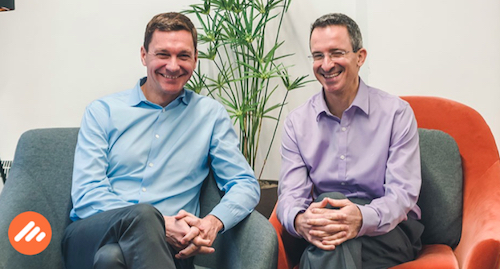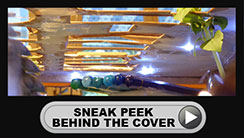Guest Blogs
Knowitall.ch often invites local experts in their field to contribute to their own blogs on our site. This means not only you will benefit from the useful recommendations that we make on our News pages, but you can also profit from some of the great advice and tips that these experts have to make on their favorite subjects. Whilst each of these bloggers has been recommended to us at some point during the evolution of Know-it-all passport and knowitall.ch, obviously we are not able to test out all the suggestions they make on their blogs, nor do we necessarily agree with all their opinions. So if you do find one of their tips useful (or not!), do let us know!
To make these blogs more accessible to you, we have now decided to group them altogether in one section, entitled Guest Blogs, accessible from our main menu bar. We will also post the most recent blogs on the home page of our site in the right hand column.
We are still building up this area of the site, and are looking for bloggers in a number of sections, including Your Home, Travel, and Leisure, so if you feel you have a useful contribution to make in either of these areas, and have the time to submit blog entries approximately every month, then please get in touch!

Photo by Annie Spratt on Unsplash
By Birgit Suess, Virtually ConnectEd
As parents, we want the best for our children. We want them to develop on the same schedule that is hanging up on the doctor’s office wall, we want them to be happy, do well in school and have friends.
All children face some sort of challenge at one point or another. It is not uncommon for children to have difficult with speech and language. If you are concerned about your child’s speech and language development, here are some things to look for.
Articulation:
Articulation is sounds in speech. The most common errors in English are /l/, /s/ and /r/. These sounds should start emerging around ages 4 and 5, although many children struggle with them until age 8. By age 8 a child should be able to say all the sounds in the English language.
Phonological Delay:
Phonological delays often get confused with articulation delays because the child is saying the wrong sounds, but it’s not that the child can’t say the sounds, it’s that the child doesn’t say them in the correct place. For example, these children often say “tup” for “cup” and “tat” for “cat.” The might also say “gog” for “dog.” For a 2 year-old, this is typical and nothing to worry about, but if your 5 year-old is still mixing up sounds, it’s a good time to bring him or her in to see your doctor or speech therapist.
Stuttering:
Also known as fluency, stuttering is a normal occurrence for everyone once in a while. When repeating sounds, words or having blocks (when there are moments of silence when a child is trying to ‘push’ a word out) become common and/or start to include eye blinking or leg slapping, it’s time to bring your child in for professional help.
Receptive Language:
How well can your child understand language? Does your child not respond to your requests out of defiance, or do they perhaps not understand you? Does your child have difficulties following directions or answering questions? Does your child point to objects instead of ask for them? These are all signs that your child may be having difficulty understanding language.

Those who know me would say that I am not one for hyperbole. However the speakers I coached at the UN TEDx PlacedesNationsWomen event in December completely hit the target.
I coached 8 of the 11 speakers at the event, celebrating women’s empowerment.
The speakers had great content and delivery, and kept the audience engaged from start to finish.
Yet, it proved to be a lot of work for all those involved with many lessons learnt. So for those who are planning to organise a TEDx, give a talk or want to become a more impactful public speaker, here are 5 do’s and 5 don’ts from coaching and observing speakers.
Do’s
- Select a speaker fluent in the language of the talk. You have to memorise your TEDx talk, which means it helps to be absolutely fluent in the language. This will also ensure you sound natural and conversational when you deliver it. And a good memory is key!
- Have an inspiring personal story to tell. You have to put yourself in the story for it to resonate with the audience. Many professionals shy away from the personal, preferring to speak about “it” rather than “I”. But this is not a TEDx talk. You have to be prepared to open up in your talk, share your experiences, opinions and values.
- Leave behind your professional presenting style. You are no longer an academic, activist or lawyer, you are now a storyteller. You are not there to share your knowledge, but to persuade the audience your idea has merit. This means getting rid of unnecessary detail. You need to set the context, and what is most important are the individual stories you tell to illustrate your points and the narrative arc of the talk.
- Match your words to your voice and body language. You have to make sure that these three channels of communication are aligned. You need to guide the audience so they understand immediately the emotions (joy, sadness, compassion) you want them to feel. And to do this you have to modulate your speed, pitch and tone. The pause, for example, will let the emotion you want to convey hover in the air so that the audience has time to absorb it.
- Structure with clear signposts. You need to help your audience with short declarative sentences, which tell them where you are going. For example, this is my story of empowerment; I was in denial; or myths and taboos lead to stigma and harmful practices.

A TED talk is all about sharing an inspiring idea. It sounds easy enough, but it is more difficult than you might think.
I speak from experience - having coached speakers for several TEDx events in Geneva and Lausanne and having been called in twice to salvage someone's TED talk within days of the event.
So when I was asked by the UN to coach 9 speakers for their PlacedesNationsWomen event one of the first things I did was to write a guide on what makes a TED talk different from the usual presentation or keynote address.
Here are my tips on drafting a TED talk, based on my experience as a professional public speaker and coach and the wonderful book
"TED Talks - The Official TED Guide to Public Speaking". by the head of TED Chris Anderson.
- Make it personal: As a speaker, talk about an idea that matters deeply to you and transmit the idea and the passion you feel about it to your audience. It has to be an idea worth sharing!
- Know the audience: Think of yourself as a tour guide taking the audience on a journey to a new place. You need to begin where the audience is and steer them clearly and compellingly along the way.
- Stick with your idea: Think of your talk as about an idea rather than an issue. This is particularly important if you are tackling a tough topic where compassion fatigue can easily set in. An issue-based talk leads with morality. An idea based talk leads with curiosity. It says, "isn't this interesting?" rather than "isn't this terrible?" For example, this is an issue: Education for all. An idea would be framed as "Education's potential is transformed if you focus on the amazing (and hilarious) creativity of kids.
- Connect the dots: You need a connecting theme, which ties together each narrative element. It is the idea that you want to construct in the minds of the audience. Can you put this in no more than 15 words?
- Make it memorable: Think about the three points/messages that you want the audience to remember when they leave the room. Studies show people rarely remember more than three points and recall drops dramatically the day after.
The structure
Choose a structure that most powerfully develops your connecting theme. See below some suggestions, which can be mixed and matched over the talk.
- Personal journey: If you are sharing your personal journey then you may want to follow the classic "hero's journey" structure where you have a goal but meet challenges along the way which you overcome and resolve the best you can.
- Persuade: If you want to persuade an audience that the way they currently see the world isn't quite right, you will want to guide them through your argument so that is it plausible. This means breaking down your argument logically into small steps, perhaps even taking the counter position to show that it is flawed.
- Detective: Another way to build a persuasive case is to play detective. You start with a puzzle and then with the audience search for solutions, ruling them out one by one. You invite the audience on a process of discovery and this can work well if you are a scientist or researcher talking about a discovery you have made.
- Aspirational: You may want to speak of the world not as it is, but as it might be. You paint a picture of the alternative future you want and compare and contrast it with the situation today. (Think Martin Luther King, "I have a dream".)

Techniques to make your talk memorable
- Open with impact. Within the first minute, you need to get the audience's attention, make them curious and excited. Here are some ways to start.
1) A surprising statement, fact or statistic.
2) A surprising rhetorical question
3) Show a compelling slide, video or object
4) A personal story or anecdote
You want to tease, but don't give away your punch line. If you are looking to persuade or reveal a discovery you want to build up to your revelation.
- Close with impact.
1) Move from the specific to the broad
2) Call to action - invite people to take action on your idea.
3) Personal commitment - make a commitment of your own.
4) Values and vision - can you turn what you have discussed into an inspiring or hopeful vision of what might be?
5) Narrative symmetry - the human brain likes balance so you may want to link back to your beginning so that the narrative comes full circle.
In my next blogs, I shall take you through how to align delivery and content as well as lessons learnt from my TED journey.
Author's bio
 Claire is a former BBC correspondent and international spokeswoman who is passionate about helping people communicate with confidence. Since 2006, she has successfully trained hundreds of professionals in the art of presenting and public speaking, talking to the media, managing communications in a crisis, and writing for the web. In addition, she has coached C-level executives and public figures to give powerful TEDx and TED style talks in Europe and the Middle East. A Swiss and UK national, Claire trains and coaches in French and English.
Claire is a former BBC correspondent and international spokeswoman who is passionate about helping people communicate with confidence. Since 2006, she has successfully trained hundreds of professionals in the art of presenting and public speaking, talking to the media, managing communications in a crisis, and writing for the web. In addition, she has coached C-level executives and public figures to give powerful TEDx and TED style talks in Europe and the Middle East. A Swiss and UK national, Claire trains and coaches in French and English.
Claire is also a highly experienced moderator having facilitated panel discussions with government ministers, NGO activists, humanitarians and human rights specialists at major events.

© credit to EMF in-house photographer Gabrielle Ward
The Challenge
How to prioritize your limited renovation budget when you are the new owner of a quaint three-story 120m2 village house that is located on a tiny lane with no land outside of the building’s four walls, three of which are contiguous with other homes?
Said home is situated in the old town of Collex-Bossy, and although the 1800s-era building itself is not classified, it sits in a Zone 4B heritage-protected neighbourhood. This means that relatively stringent cantonal regulations dictate every minute detail of the type of transformation and the choice of materials allowed when converting this space into a cosy family home.
The structure is currently uninhabitable thanks to the discovery of undersized structural beams, rampant wood worm, asbestos and lead. Although the electric radiators and hot water heater still function, current rules insist that the old electric-based heating system has to go.
Finding Solutions
One of the first and most pressing questions among many we tackled to date was how to replace the no-longer-authorised and energy-consuming electric heating system given the lack of a cellar or sufficient technical space for a larger furnace and boiler installation. We looked at the possibility of a heat pump installation hung externally from the second floor but the close proximity of the neighbours’ roofs and windows meant we would be unlikely to meet either physical distance or passive noise rules.
What is more, modern energy regulations in Geneva require that once a roof is reconstructed (remember, we will replace the timber roof truss and insulate the structure to 21st century standards), it must be fitted out with solar panelling and related equipment for heating water—another internal space zapper.
Luckily, after a full though technically-challenging energy audit, we have decided to go forward with a wood pellet heating system with underfloor distribution on the upper floors and radiator units under the ground floor windows. The latter was a compromise as we do not have the ceiling height necessary on the entry level for in-ground insulation plus an underfloor installation. Digging too far down into the stone and earth traditional foundation was also deemed too risky for the solidity of the building.
We found a compact modulable pellet store that will be installed in the very back of the ground-floor technical room that is large enough to minimise the number of deliveries needed throughout the year, thereby reducing recharge fees. Although the vehicles that supply pellets are too large to manoeuvre in the tiny lane, their long-tubed delivery system (similar to that used for oil) will just reach the small discreet recharge panel that will be integrated into the façade of the building.
A Pleasant Surprise
At the outset and during a few rather stressful moments in the planning process, this renovation project seemed to be full of nothing but constraints. However, we have had at least one rather pleasant surprise!
Because the home will be heated with wood pellets, a renewable energy source produced from wood waste, the owner will be eligible for an exemption on the solar-heated water installation and still qualify for generous subsidies. Why, you ask, would anyone in this day and age who is remotely environmentally conscious not want to voluntarily harness the sun’s free energy?
Well other than the obvious reason of budget savings (in the region of Fr. 15,000 for equipment and installation), this home does not have sufficient internal space for the double boiler and converter necessary to receive energy from the thermal roof panels. If it had been imposed on the project by building regulations, it is likely that we would have lost the ground floor guest bath and a portion of the vital technical room.
Instead, we are not only saving part of the project budget which will be dedicated to triple glazing on the new windows, an energy plus, but also we will be economising on technical space leaving more room for living space. A big win for this client.
If you would like to check back on this project’s progress, we will be posting photos and milestones, that is once the cantonal authorities grant the construction permit, so don't hesitate to look in on our website or join up to the EMF mailing list for regular updates.
Author's bio

Liz Forest is the founder and owner of EMF Management, a Swiss-registered renovation project management company servicing the international community in the greater Lake Geneva / Vaud region.
Liz spent the first ten years of her professional career as a free-market micro-economist and project manager. A move to Geneva in 1997 with her young family inspired a change from the corporate world ... and a home purchase over a decade ago taught Liz exactly what property ownership and renovating in Switzerland entails.
In 2013, Liz founded EMF to provide renovation project management services to busy expat homeowners who want to transform their space without the overwhelm. EMF handles the heavy lifting so clients do not have to learn a new trade, take time off work, or sacrifice family holidays or their sanity just to make their house a home.

Angus Ridgway and Tal Ben-Shahar ©Potenialife
By Sunita Sehmi, Walk The Talk
We know that leaders are avid readers and in a market flooded with leadership books sighting leadership as a challenge, The Joy of Leadership offers a renewed and captivating vision on how truly joyful leadership can be. Based on research and science, it is both practical and easy to apply. I found it provides authoritative insights and valuable tools to prepare any leader to flourish.
More than a management book, it’s practical, easy to read and full of life skills. A sensible and humanistic approach to a very human behaviour, leading. Both Angus and Tal are co-founders of Potentialife. I was very fortunate to interview one of the authors, Tal Ben Shahar. Enjoy!
Tal Ben-Shahar (www.potentialife.com; Israel) is a speaker and author of the international best sellers Happier and Being Happy. He taught two of the largest classes in Harvard University’s history, Positive Psychology and The Psychology of Leadership. Tal is co-founder and Chief Learning Officer at Potentialife, a leadership development organization.
Angus Ridgway (London, UK) is Co-Founder and CEO of Potentialife. Previously he was with McKinsey, and led the Strategy Practice in Europe, Middle East and Africa, overseeing the work of over 1,000 colleagues. In addition, for over 10 years he led Leadership Development functions at McKinsey, most recently for the global group of 1,500 Partners.








